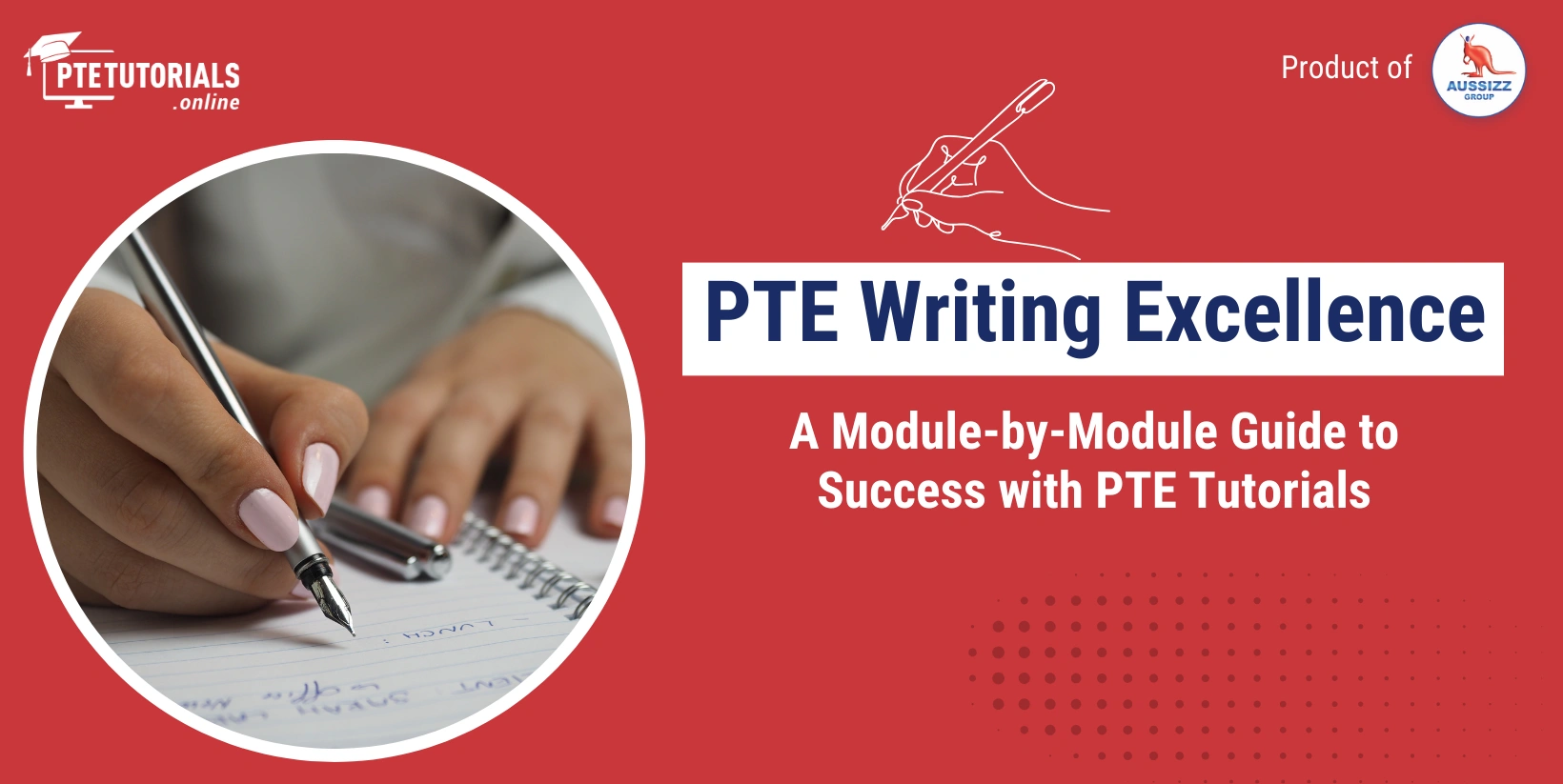
PTE Writing Excellence: A Module-by-Module Guide to Success with PTE Tutorials
The PTE (Pearson Test of English) exam is a widely recognized English language proficiency test that assesses your skills in listening, reading, writing, and speaking. Among its various sections, the PTE Writing exam holds a significant place as it evaluates your ability to communicate effectively through written language. In this guide, we will explore each module of the PTE Writing test and provide insights on how to excel. Additionally, we'll conclude by discussing how PTE Tutorials can support you in achieving a high score not only in PTE Writing but also in all modules.
The PTE Writing exam consists of two modules:
- Summarize Written Text (SWT): In this module, you are presented with a passage, and your task is to write a concise summary of the text in one sentence. You have 10 minutes to complete each task.
- Write Essay (WE): This module requires you to write an essay on a given topic. You are allotted 20 minutes for this task.
Now, let's delve into each module individually and explore effective strategies to perform well.
Summarize Written Text (SWT)
This module assesses your ability to comprehend written material and convey its main ideas concisely. Here are some strategies to excel in SWT:
- Read Actively: When presented with a passage, read it actively. Focus on identifying the main ideas, key points, and any supporting details.
- Use Keywords: In your summary, use keywords from the original text. This helps ensure that your summary accurately represents the content.
- Be Concise: Your summary should be clear and to the point. Avoid unnecessary details and stick to the main ideas.
Write Essay (WE)
In the Write Essay module, you are required to write an essay on a given topic. Here's how to approach this task effectively:
- Plan Your Essay: Take a minute or two to plan your essay before you start writing. Outline your main points and the structure of your essay.
- Introduction-Body-Conclusion Structure: Follow a traditional essay structure with an introduction, body paragraphs, and a conclusion.
- Elaborate with Examples: Support your arguments with examples or evidence. This adds depth to your essay and demonstrates your ability to provide relevant details.
- Proofread: After completing your essay, take a moment to proofread it. Check for grammar and spelling errors and make any necessary corrections.
Now that we've covered the individual modules, let's discuss how PTE Tutorials can assist you in achieving success in the PTE Writing exam and all other modules.
How PTE Tutorials Can Help You Succeed
PTE Tutorials is your one-stop solution for comprehensive PTE preparation. Here's how it can benefit you:
- Expert Guidance: PTE Tutorials provides expert guidance through well-designed study materials, practice tests, and sample questions. You can access valuable insights and tips to excel in each module.
- Practice Tests: Practice makes perfect. With PTE Tutorials, you can take practice tests that simulate the actual PTE exam conditions. This helps you become familiar with the test format and timing.
- Personalized Feedback: Receive feedback on your performance, including areas where you can improve. This personalized approach allows you to focus on your weaknesses and enhance your strengths.
- Comprehensive Support: PTE Tutorials offers support not only for the PTE Writing module but also for all other modules of the PTE exam. You can access resources and assistance for the entire exam, ensuring a well-rounded preparation.
In conclusion, excelling in the PTE Writing exam requires a combination of effective strategies, practice, and guidance. By understanding the modules, following the recommended strategies, and utilizing the resources provided by PTE Tutorials, you can boost your confidence and achieve a high score in the PTE Writing exam and all other modules. Prepare with dedication, and success in the PTE exam will be within your reach.
Start your PTE journey with PTE Tutorials and unlock your full potential in English language proficiency.